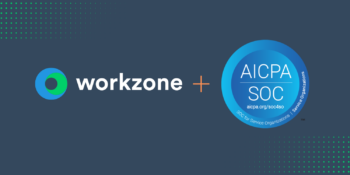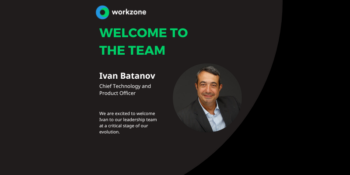No one individual and no process can guarantee project success.
What we can do is follow best practices, plan well, try to re-enact what worked in the past on similar projects, and avoid those things that we know caused our colleagues or us problems on similar implementations in recent memory. If we don’t learn lessons from our own actions and from the actions of others then we are likely to repeat the same mistakes over and over again and experience the same project failures over and over again.
With that in mind, let’s dive into the six steps essential to project success. These steps may not guarantee success on any project, but by following these steps you know that you are likely doing the best you can with what you can control.
1. Put the Pieces of the Puzzle Together Early
How the first real step in the process goes will depend upon your organization, the project, the customer, and how the project concept got from an initial discussion to a signed-on “real” project.
What is generally a given, though – especially for projects with customers who are outside of the delivery organization – is that there was some sort of sales process with an account manager who met with the customer, had several discussions, collected some requirements, drafted an initial project schedule (or at least key milestone dates) and put together an estimate (usually based on the resources and hours needed to successfully implement the solution) that became the price that the customer agreed to for the project.
Now it’s your turn to gather all of that information together and make some real sense of it.
Unless you work in an organization that truly believes that the project manager is part of a larger engagement management infrastructure, it is most likely that you won’t be part of the sales process. Therefore, it is imperative that you work closely with the account manager who met with the client, estimated the effort, and sold it to them. That person knows the customer’s quirks, they may have some intimate knowledge of some things that are specifically important to the customer that may come in handy at requirements definition time, and they have all the report mockups, notes on napkins, and scribbles and diagrams that go into making this project work in the best interest of the project client. Getting the right information to start working from starts with this critical handoff.
2. Kick the Project Off Right
The project kickoff is where the rubber meets the road for the first real-time on the project. It is critical that it is well planned, well-executed, and well documented…and those responsibilities fall to the project manager every time. Executives and supervisors will be in attendance, but they are there to show the customer they are interested in the project and that the customer is important…nothing more. The project manager is in charge from this point forward and how you set expectations and explain to the customer how you intend to run the project will either put the project on the right path or it won’t. You don’t get a second chance on the kickoff. Be confident, take charge, make good decisions, and above all be professional.
3. Make Time for Planning
There is more to planning, of course, than just a project plan. Requirements must be defined, project schedules set and reset, resource plans and forecasts put into place, budget plans and forecasts executed and revised weekly, and the planning documents that lay the groundwork for how the project team manages the engagement and communicates and handles risks and issues that must also be created, reviewed and approved. This is especially true for large projects – whether large means high profile, long, or costly…or all three. The key is to not skim over this portion even though certain higher powers may be pushing for evidence of forward momentum and task completion. Failure to plan is planning to fail. Don’t be afraid to slow things down and return to planning if you feel the project is missing pieces. Requirements must be complete and detailed before progressing on to the next phase…or rework and budget overruns are almost a certainty.
4. Execute with Best Practices
Best practices can mean different things to different people, different project managers, different customers and different organizations. Essentially, they are what helps a project manager effectively and efficiently manage the engagement while equipping him to do the best he can to bring home a successful project with a satisfied customer. Whatever you or your organization choose as key best practices, make sure that they can be easily implemented and followed so that your team of project managers can utilize them on every project going forward.
5. Make Testing a High Priority
Testing is critical. User acceptance testing (UAT) is an absolute necessity. And even though most customers are not well prepared for UAT and the delivery team knows the project solution inside and out, refrain from the urge to skim over this part or to do the testing for the client. You can help them prepare for it, help them put together test cases, etc., but don’t do it for them. You need their approval that the system has been thoroughly tested by them and that they do, indeed, accept it.
6. Run a Flawless Deployment
The title of this step is actually a little tongue in cheek. I’m not sure there has ever been a flawless deployment in the history of project management. At least I’ve never run one, experienced one or seen one from a distance. But, the final phase of any project will go a lot smoother if you take the time to create a project completion checklist.
Your project completion checklist should be tailored to your specific project. Each industry is going to have different things that need to be included in the checklist. Several items are really just follow-up to things that should have been agreed to long ago with the customer, such as “agree on level of follow-up support.” That was likely set in stone during kickoff or project planning sessions. Finally, always keep the project schedule and detailed tasks managed through deployment. If your project closure activities are massive – as they can sometimes be on government contracts, they may even warrant having their own, separate project schedule.
Following these six steps should firmly plant your feet on the path to project success. The rest is up to you!





